The Nuts and Bolts of Live Streaming
This post is part of our educational series on Live Streaming Basics for the Newbie and Video on Demand Basics for the Newbie.
Introduction
There are various factors that influence the success of a live stream such as settings of technical parameters (E.g. segment size), quality of the internet connection and choice of delivery network. All professional streaming platforms assume that users have at least a high level knowledge of these factors and know what their preferences are to successfully stream to their audience. This section covers a few of the key factors such as bitrates and bandwidth, video segments and keyframe intervals and Content Delivery Networks (CDNs).
Bitrates and Bandwidth
The quality of a stream is measured in bits per second (bps) i.e. the amount of data transferred every second (the level of compression). The higher the bitrate, the higher the quality and the higher the likelihood of difficulty in watching it. For example streaming 500k, 1M and 1.5M means the encoder produces a 500Kbps, 1000Kbps and 1500Kbps stream. The total bitrate will be the sum of the bitrate for each streams, equalling 3Mbps.
The total bitrate for your live stream cannot be greater than your bandwidth and typically you’ll need a 20% – 40% buffer in your available bandwidth. Before live streaming, it is important to run a speed test to ensure your outbound bandwidth (upload speed) can support your stream i.e. in this case for a 3Mbps stream, outbound bandwidth should be between 4Mbps and 8Mbps.
Video Segments and Keyframe Intervals
Video files can be huge and can take a long time to download before they can be viewed. The streaming process segments video files into several small chunks and sends them to your device one at a time, saving you a lot of time. The segment size is typically 5-10 seconds long (default value of 10s for StreamShark).
In video compression, a keyframe is the full frame for an image and is placed at regular intervals throughout a video. Keyframe intervals are set in the encoder and are typically less than 5 seconds (default value is 2s for StreamShark). This Keyframe frequency affects seek precision and most players are only able to seek to the nearest keyframe. For example, when you rewind or forward a video stream, you move through the keyframes. Our post on Adaptive Streaming illustrates the role of segments in a live stream.
Content Delivery Networks (CDNs)
Content providers such as media companies deliver content to their audience of end-users via Content Delivery Networks (CDNs). A CDN is a globally distributed network of servers deployed in multiple data centers, essentially caches containing copies of data placed at various points in a network in order to maximise bandwidth for access to the data. CDNs serve content to end-users with high availability and high performance. A critical parameter for live streaming content to users is latency, the delay between broadcast and consumption by the viewer. Live Streaming videos through StreamShark platform offers super low latency live streams of approximately 4-5 seconds.
Live or on-Demand Videos streamed via StreamShark are distributed through MetaCDN, the parent company of StreamShark. MetaCDN combines a range of existing CDN providers into one large global network and dynamically optimises and unifies leading cloud and network infrastructure providers to rapidly, securely and reliably deliver content to users. StreamShark lets you set the preferred region (original location) for your video on demand.
Your first stream
You now know the nuts and bolts of live streaming and will find it easy to to set up a live stream or upload and stream a video file.
Fundamental Concepts
If you want to learn more, a few more fundamental concepts are covered in the following posts in this series:
